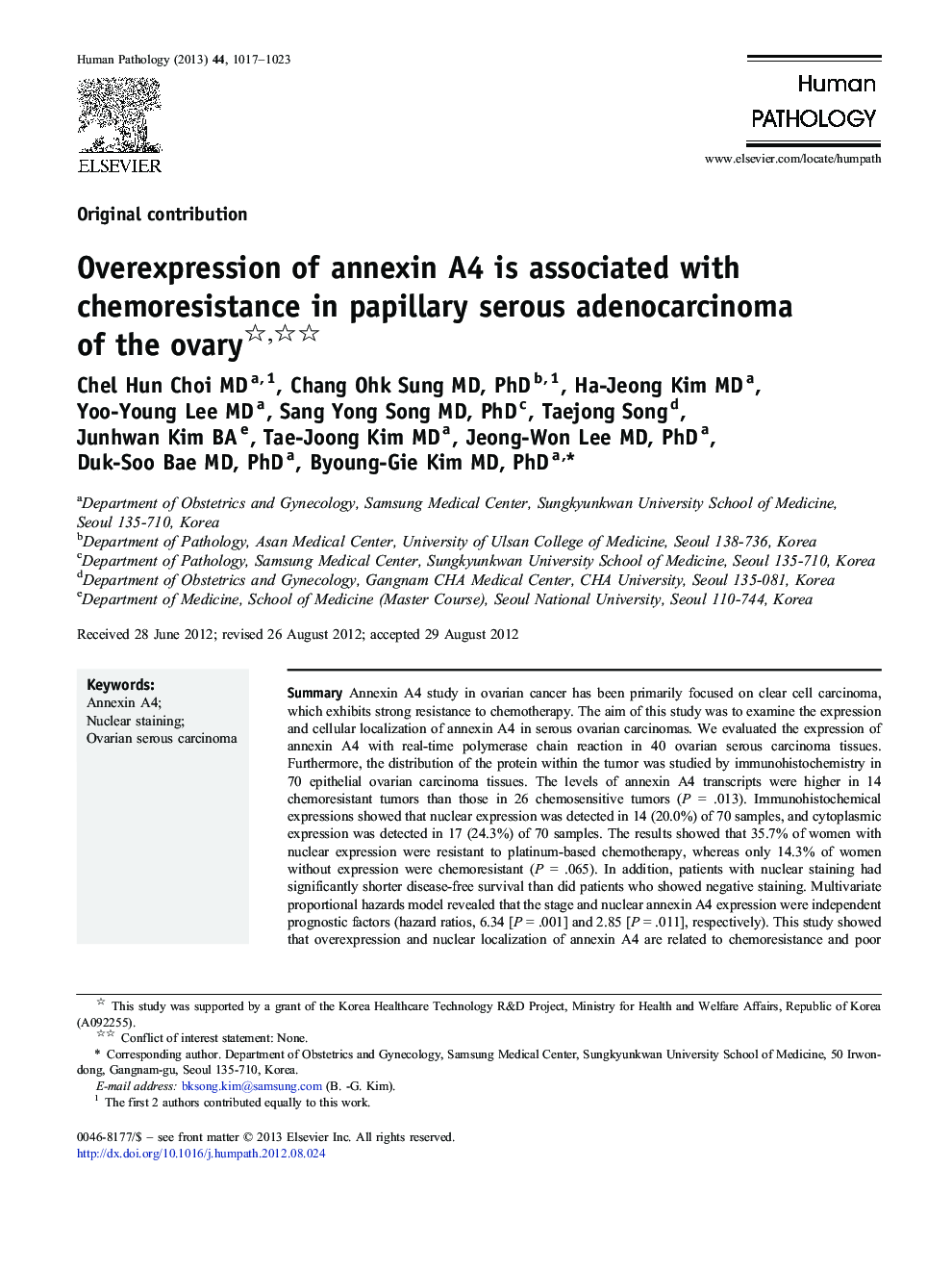| Article ID | Journal | Published Year | Pages | File Type |
|---|---|---|---|---|
| 4133635 | Human Pathology | 2013 | 7 Pages |
SummaryAnnexin A4 study in ovarian cancer has been primarily focused on clear cell carcinoma, which exhibits strong resistance to chemotherapy. The aim of this study was to examine the expression and cellular localization of annexin A4 in serous ovarian carcinomas. We evaluated the expression of annexin A4 with real-time polymerase chain reaction in 40 ovarian serous carcinoma tissues. Furthermore, the distribution of the protein within the tumor was studied by immunohistochemistry in 70 epithelial ovarian carcinoma tissues. The levels of annexin A4 transcripts were higher in 14 chemoresistant tumors than those in 26 chemosensitive tumors (P = .013). Immunohistochemical expressions showed that nuclear expression was detected in 14 (20.0%) of 70 samples, and cytoplasmic expression was detected in 17 (24.3%) of 70 samples. The results showed that 35.7% of women with nuclear expression were resistant to platinum-based chemotherapy, whereas only 14.3% of women without expression were chemoresistant (P = .065). In addition, patients with nuclear staining had significantly shorter disease-free survival than did patients who showed negative staining. Multivariate proportional hazards model revealed that the stage and nuclear annexin A4 expression were independent prognostic factors (hazard ratios, 6.34 [P = .001] and 2.85 [P = .011], respectively). This study showed that overexpression and nuclear localization of annexin A4 are related to chemoresistance and poor survival in patients with serous papillary ovarian carcinomas. Future studies are required to develop new therapies targeting annexin A4 in patients with ovarian epithelial adenocarcinoma.
